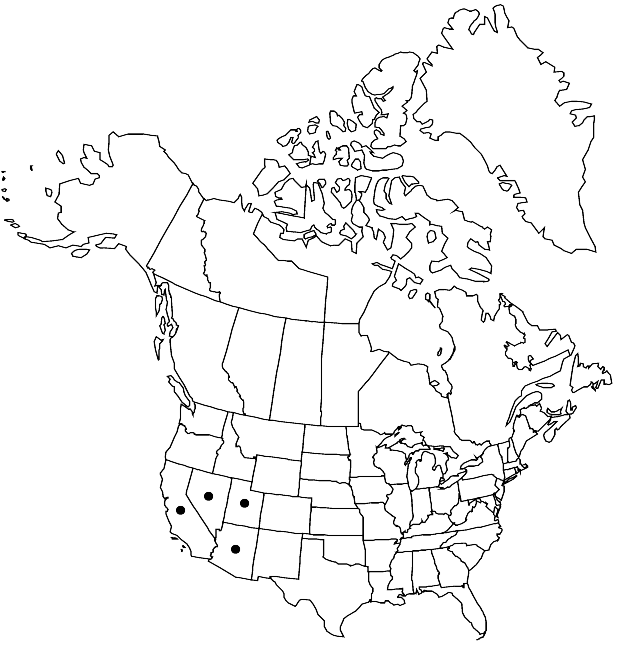Physaria tenella
Novon 12: 328. 2002.
Annuals or, rarely, biennials; with a taproot; densely pubescent, trichomes (simple or stellate, sessile or short-stalked), 4–7-rayed, rays usually furcate, rarely bifurcate, (nearly smooth to finely tuberculate). Stems several from base, decumbent to erect, (several-branched, frequently stout), 1.5–6 dm. Basal leaves: blade elliptic, (1.5–) 3–6.5 cm, margins entire, repand, or shallowly dentate. Cauline leaves: (proximal shortly petiolate, distal sessile); blade linear to elliptic or obovate, (0.5–) 1–3.5 (–4.5) cm, margins entire or repand. Racemes loose. Fruiting pedicels (recurved, sigmoid), 5–15 mm. Flowers: sepals oblong, lanceolate, or elliptic, (3–) 3.5–6 (–7.5) mm, (lateral pair subsaccate, median pair thickened apically, cucullate); petals (yellow to orange), suborbicular or obovate, (5–) 6.5–8 (–11) mm, (narrowing gradually to broad claw, usually widened at base). Fruits (sessile or shortly stipitate), orbicular or obovoid, often slightly compressed, (3.5–) 4–6 mm; valves sparsely pubescent, trichomes sessile and stellate, densely pubescent inside, trichomes simple or branched; ovules 4–12 per ovary; style 2–4.5 mm. Seeds flattened. 2n = 10, 20.
Phenology: Flowering Feb–May.
Habitat: Sandy soils, gravel, clayey loam, loose rocky slopes, washes, desert slopes and plains, lava hills, frequently in or near bushes
Elevation: (0-)600-1900 m
Distribution

Ariz., Calif., Nev., Utah, Mexico (Sonora)
Discussion
Selected References
None.
Lower Taxa
"not" is not a number. "elongated" is not a number."thick" is not a number."dm" is not declared as a valid unit of measurement for this property.